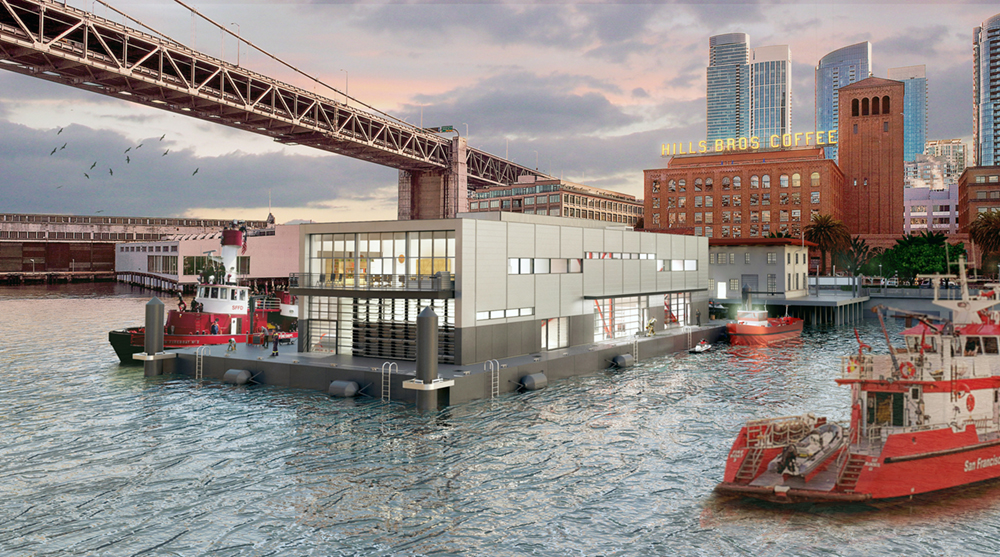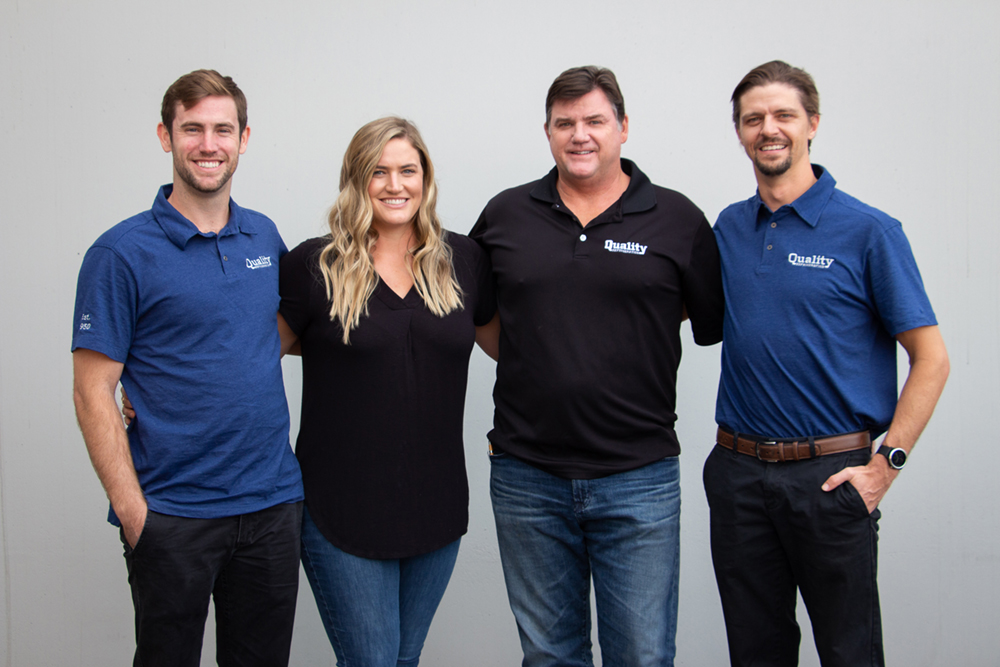By Karen Robes Meeks Seventy years ago, Jack Appelt used his refrigeration know-how to build a family business that could support the burgeoning demand for refrigeration services in cargo ships, the U.S. Navy and surrounding commercial markets in the Los Angeles Harbor area. Today, the business that Appelt built, Quality Refrigeration, celebrates seven decades as a go-to service company for marine and commercial HVACR systems for cargo ships, cruise lines, offshore oil platforms, industrial and commercial markets. It boasts one of the largest inventories of certified marine parts in stock on the West Coast. The business also remains a family…
Port Angeles, Wash.-based Boatbuilder Brix Marine is currently constructing a 32-foot by 12-foot catamaran for the Qathen Xwegus Management Corp. (QXMC). QXMC is the business arm of the Klahoose First Nation, located on Cortes Island, BC, Canada. The corporation, whose activities include industries such as forestry, aquaculture, tourism, and retail, will operate the twelve-passenger vessel as a water taxi. Completion is slated for Fall 2021. The vessel’s power and propulsion are twin Volvo Penta D4 270hp engines with Aquamatic DPI outdrives. The 3212-CTC model vessel’s full walk around configuration, combined with two side boarding doors port and starboard, allows for…
A new report from the World Bank and the International Association of Ports and Harbors (IAPH) examines better digital collaboration between private and public entities across the maritime supply chain, arguing that these kinds of collaborations result in significant efficiency gains, safer and more resilient supply chains, and lower emissions. Maritime transport carries over 90% of global merchandise trade, totaling some 11 billion tons of cargo per year. Digitizing this sector of the global economy could bring wide-ranging economic benefits and contribute to a stronger, more sustainable recovery. The new report, entitled “Accelerating Digitalization: Critical Actions to Strengthen the Resilience…
North Vancouver, BC-based HaiSea Marine Limited Partnership, has begun a battery-powered and low emissions tugboat build program to provide ship-assist and escort towing services to LNG carriers calling at LNG Canada’s new export facility in Kitimat in the unceded traditional territory of the Haisla Nation. HaiSea Marine, which is majority owned by the Haisla Nation in partnership with Seaspan ULC, has a contract with LNG Canada to build and operate escort and harbor tugs required for their export facility in Kitimat. With a supply of clean hydroelectric power available in Kitimat, the harbor tugs will be able to recharge from…
By Gordon Feller, gordon@GordonFeller.com The International Maritime Organization is partnering with the Government of Singapore to create an ambitious new ship clearance project to establish a digitalized system for electronic exchange of information in ports, the SwiFT, or Single Window for Facilitation of Trade, project. To kick-off the new project, the IMO issued a “call for expressions of interest” from countries with a medium-sized port. The request was to have them take part in a pilot program supported by Singapore via in-kind contributions, and by the IMO via its Integrated Technical Cooperation Programme (ITCP). Under the terms of the pilot…
British Columbia-based Seaspan Marine Transportation has made changes to its senior leadership team following an organizational restructuring, the company has announced. Frank Butzelaar, who most recently served as Chief Executive Officer of Seaspan Marine, has assumed the role of Chief Operating Officer of the Washington Companies, Seaspan’s parent corporation. He will work with Larry Simkins, CEO of the Washington Companies, and oversee the strategic direction of subsidiaries Montana Rail Link, Seaspan Marine Transportation and Southern Railway of British Columbia. Ian McIver, previously the senior vice president of corporate development with Seaspan Marine, has been appointed president of Seaspan Marine Transportation,…
Seaspan Shipyards has been chosen by the Canadian government to design and build a Polar Icebreaker, the flagship of the Canadian Coast Guard’s icebreaking fleet, as part of the country’s National Shipbuilding Strategy program. The icebreaker, Seaspan’s fourth class of NSS vessel, is to be built at the company’s Vancouver shipyard, Seaspan revealed in early May. The vessel is to be built concurrently with the second Joint Support Ship for the Royal Canadian Navy, one of the largest naval vessels by length ever to be built in Canada, and one of the largest and most advanced ocean science research ships…

By Peter Marsh Manson Construction Co. of Seattle was established in 1905 by an enterprising Swedish immigrant and since the 1980s, the company has built or converted several trailing suction dredges designed by the Hockema Group that have set standards for capacity in their class, from the 265-foot Newport, with a hopper capacity of 4,000 cubic yards, to the 390-foot hopper dredge Glenn Edwards, launched in 2006 with a hopper capacity of 13,700 cubic yards. By 2008, Manson Vice President Henry Schorr was discussing the possibility of a bigger and more efficient version of the Glenn Edwards. This led to…
Seattle-based Elliott Bay Design Group has completed a weld engineering and inspection project for USNS SBX-1, a floating, self-propelled early-warning radar station designed to operate in high winds and heavy seas. SBX-1 was developed as part of the Defense Department’s Basic Missile Defense System. As the SBX-1 is a semi-submersible platform vessel, it was necessary to cut large access hatches in the hull columns to extract equipment being refurbished and replaced. The work required replacement and re-welding of the access cutouts in steel plating up to over 1.5 inches thick. EBDG officials said they developed an optimized weld procedure for…

Seemingly overnight, a new structure appeared on San Francisco’s waterfront. Situated at Pier 22½ just behind historic Firehouse 35 and nestled beside the Bay Bridge, this floating building is San Francisco’s new Fire Station 35. The facility is an answer to the city’s long-awaited need for updated fire and marine safety on the Bay. The overnight materialization of Fire Station 35 on San Francisco’s waterfront was due to the method in which it was built. To reduce public impact and avoid disruption along the bustling Embarcadero, the float and other marine components were delivered to the nearby, and less occupied,…

